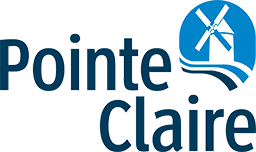| Environmental Columns
The emerald ash borer in Pointe-Claire
Since it arrived in Pointe-Claire in 2013, the emerald ash borer has infested over 1,200 trees. This invasive insect has been decimating ash tree populations in Canada since 2002.
Its origins
The emerald ash borer is a beetle originating in Asia. Its presence in Canada was discovered in 2002 in Windsor, Ontario, probably arriving by boat before contaminating trees in Canada. Over the years, it has spread to Southern Ontario, parts of Quebec, and half of the United States, where it has destroyed millions of trees.
Its environmental impact has devastating consequences on forest ecosystems, underbrush vegetation, and birds. The decrease in the number of trees in urban areas due to felling also reduces air quality and biodiversity.
Life cycle
The emerald ash borer lays its eggs under the bark and in crevices on the tree. The egg then develops to the larval stage, burrowing under the bark and feeding on the area between the wood and the bark. Like a parasite, the larva draws nutrients and water from the tree and destroys the sap, the tree’s source of vital energy, thereby killing the tree.
The larva then develops to the adult stage, becoming a small green insect 8 to 14 mm in length. To exit the tree, the insect bores a D-shaped hole. It will then stay in the sun on treetops during its reproductive period, feeding on leaves until there are no more left.
How to identify an infected tree
From outside, you can identify the presence of emerald ash borers by the D-shaped holes they leave when exiting the tree. If you check under the bark, you can see S-shaped tunnels made by larvae.
Situation in Pointe-Claire
In 2017, the City had 222 infested ash trees on private land and 857 trees on public land out of 9,900 ash trees in total.
When an infected or dead tree is felled, it is replaced by another tree species to fight the spread of the insect. Every year during Earth Day, the City distributes 575 trees free of charge to help residents with replanting efforts. This year, the event will take place on Saturday, April 21.
Treatment and grants from the City
37% of ash trees on public land and 9.5% on private land are treated each year. This leaves 2,410 trees on public land and 4,376 trees on private land that are likely to become infected.
Preventive treatment for ash trees requires TreeAzin™, a systemic insecticide. Since 2012, 1,426 ash trees throughout the city have been treated.
The City offers grants to treat and fell ash trees. The grant for treatment covers 50% of its cost, up to a maximum of $1,500 over two years for each residential address. The grant for felling covers 50% of its cost, up to a maximum of $200 per tree.
To apply for a grant, contact the Public Works Department at 514-630-1230 or tp@pointe-claire.ca
Sources
- CAA-Quebec: Emerald ash borer: beware of firewood! https://www.caaquebec.com/en/at-home/advice/tips-and-tricks/tip-and-trick/show/sujet/emerald-ash-borer-beware-of-firewood/
- Canadian Food Inspection Agency (CFIA): Areas Regulated for the Emerald Ash Borer http://www.inspection.gc.ca/plants/plant-pests-invasive-species/insects/emerald-ash-borer/areas-regulated/eng/1347625322705/1367860339942
- Natural Resources Canada (NRC): Emerald ash borer https://www.nrcan.gc.ca/forests/fire-insects-disturbances/top-insects/13377
